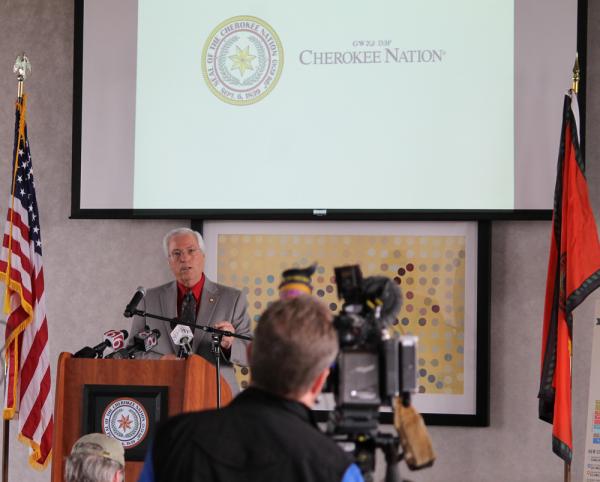
ROGELIO V. SOLIS, FILE — AP Photo
WASHINGTON — The No. 1 question about President Barack Obama’s health care law is whether consumers will be able to afford the coverage. Now the answer is coming in.
Published: September 4, 2013
By RICARDO ALONSO-ZALDIVAR — Associated Press
The biggest study yet of premiums posted by states finds that the sticker price for a 21-year-old buying a mid-range policy will average about $270 a month. That’s before government tax credits that act like a discount for most people, bringing down the cost based on their income.
List-price premiums for a 40-year-old buying a mid-range plan will average close to $330, the study by Avalere Health found. For a 60-year-old, they were nearly double that at $615 a month.
Starting Oct. 1, people who don’t have health care coverage on their job can go to new online insurance markets in their states to shop for a private plan and find out if they qualify for a tax credit. Come Jan. 1, virtually all Americans will be required to have coverage, or face fines. At the same time, insurance companies will no longer be able to turn away people in poor health.
The study points to the emergence of a competitive market, said lead author Caroline Pearson, a vice president of the private data analysis firm. But it’s a market with big price differences among age groups, states and even within states. A copy was provided to The Associated Press.
The bottom line is mixed: Many consumers will like their new options, particularly if they qualify for a tax credit. But others may have to stretch to afford coverage.
“We are seeing competitive offerings in every market if you buy toward the low end of what’s available,” said Pearson, a vice president of Avalere.
However, for uninsured people who are paying nothing today “this is still a big cost that they’re expected to fit into their budgets,” Pearson added.
The Obama administration didn’t challenge the study, but Health and Human Services spokeswoman Joanne Peters said consumers will have options that are cheaper than the averages presented. “We’re consistently seeing that premiums will be lower than expected,” she added. “For the many people that qualify for a tax credit, the cost will be even lower.”
With insurance marketplaces just weeks away from opening, the Avalere study crunched the numbers on premiums filed by insurers in 11 states and Washington, DC.
Eight of them are planning to run their own insurance markets, while the federal government will run the operation in the remaining four. There were no significant differences in premiums between states running their own markets and federal ones.
The states analyzed were California, Connecticut, Indiana, Maryland, New York, Ohio, Rhode Island, South Dakota, Vermont, Virginia and Washington. No data on premiums were publicly available for Texas and Florida — together they are home to more than 10 million of the nation’s nearly 50 million uninsured people — and keys to the law’s success.
However, Pearson said she’s confident the premiums in the study will be “quite representative” of other states, because clear pricing patterns emerged. Official data for most other states isn’t expected until close to the Oct. 1 deadline for the new markets.
The study looked at premiums for non-smoking 21-year-olds, 40-year-olds and 60-year-olds in each of the 11 states and the District of Columbia.
It compared four levels of plans available under Obama’s law: bronze, silver, gold and platinum. Bronze plans will cover 60 percent of expected medical costs; silver plans will cover 70 percent; gold will cover 80 percent, and platinum 90 percent.
All plans cover the same benefits, but bronze features the lowest premiums, paired with higher deductibles and copays. Platinum plans would have the lowest out-of-pocket costs and the highest premiums.
Mid-range silver plans are considered the benchmark, because the tax credits will be keyed to the cost of the second-lowest-cost silver plan in a local area.
The average premium for a silver plan ranged from a low of $203 a month for a 21-year-old in Maryland to a high of $764 for a 60-year-old in Connecticut.
The silver plan premiums for 40-year-olds were roughly $75 a month higher than for 21-year-olds across the states. But the price jumped for 60-year-olds. The health law allows insurers to charge older adults up to three times more than younger ones. That’s less of a spread than in most states now, but it could still be a shock.
“It’s striking that the curve increases quite dramatically above age 40,” said Pearson. “As you get older and approach Medicare age, your expected health costs start to rise pretty quickly.”
But older consumers could also be the biggest beneficiaries of the tax credits, because they work by limiting what you pay for health insurance to a given percentage of your income.
For example, an individual making $23,000 would pay no more than 6.3 percent of their annual income — $1,450 — for a benchmark silver plan.
That help tapers off for those with solid middle-class incomes, above $30,000 for an individual and $60,000 for a family of four.
The study also found some striking price differences within certain states, generally larger ones. In New York, with 16 insurers participating, the difference between the cheapest and priciest silver premium was $418.


